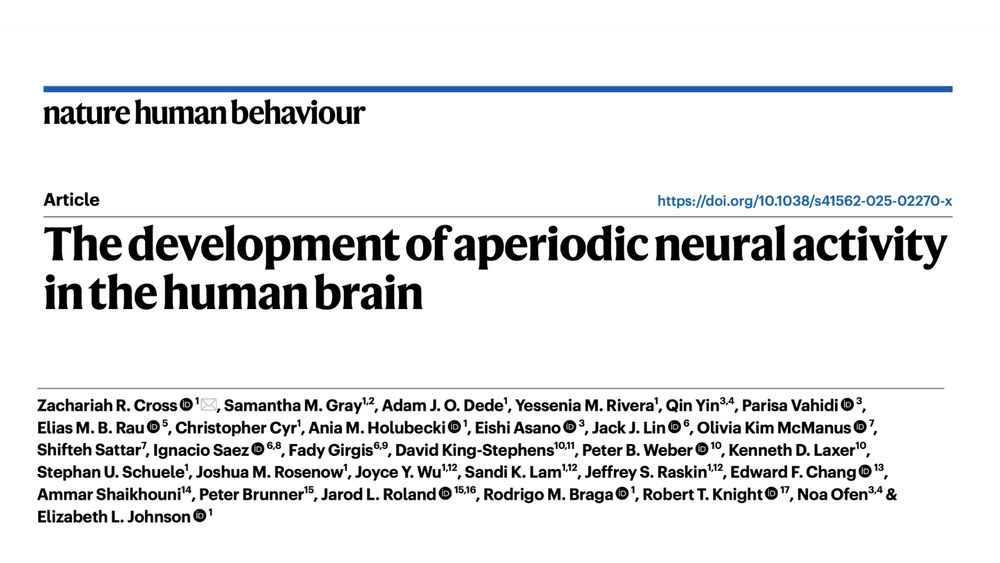
It means prioritizing the patient across the entire pipeline: Discovery, Design, and Delivery of neuro-engineering treatments for psychiatric disorders.
Join me to discuss at @embs.org #NER25 hosted by @onemindaccelerator.bsky.social

It means prioritizing the patient across the entire pipeline: Discovery, Design, and Delivery of neuro-engineering treatments for psychiatric disorders.
Join me to discuss at @embs.org #NER25 hosted by @onemindaccelerator.bsky.social
Our workshop at @embs.org #NER25 hosted by @onemindaccelerator.bsky.social, will explore how research, startups, and investment can come together to advance mental health care.
neuro.embs.org/2025/satellite-workshops/

Our workshop at @embs.org #NER25 hosted by @onemindaccelerator.bsky.social, will explore how research, startups, and investment can come together to advance mental health care.
neuro.embs.org/2025/satellite-workshops/
It was inspiring to witness the growing community driving cutting-edge #BCI research from the bench to real life at #NYBCI25
Here’s to building the future of #neurotechnology, together. 🧠⚡

It was inspiring to witness the growing community driving cutting-edge #BCI research from the bench to real life at #NYBCI25
Here’s to building the future of #neurotechnology, together. 🧠⚡
Proud to be part of this community alongside peers like @maryamshanechi.bsky.social & @claudialugo.bsky.social!

Proud to be part of this community alongside peers like @maryamshanechi.bsky.social & @claudialugo.bsky.social!
@jacobrobinson.bsky.social (CEO @motifneuro.bsky.social) on how brain-computer interfaces could transform mental health.
Honest, bold & inspiring. I encourage folks to read & subscribe. brainjacob.substack.com
#BCIs #BrainComputerInterface

@jacobrobinson.bsky.social (CEO @motifneuro.bsky.social) on how brain-computer interfaces could transform mental health.
Honest, bold & inspiring. I encourage folks to read & subscribe. brainjacob.substack.com
#BCIs #BrainComputerInterface
Out today in @nathumbehav.nature.com! This study, from Elizabeth Johnson, uncovers how subtle changes in neural 'noise' impact our attention, memory, and cognition through development.
Proud to have contributed!
www.nature.com/articles/s41...

Out today in @nathumbehav.nature.com! This study, from Elizabeth Johnson, uncovers how subtle changes in neural 'noise' impact our attention, memory, and cognition through development.
Proud to have contributed!
www.nature.com/articles/s41...

www.des-show.com/agenda-sessi...

www.des-show.com/agenda-sessi...
After an exceptional defense, we wish her all the best as she embarks on completing medical school 🥼 So proud to have co-supervised this trailblazer with
@xiaosigu.bsky.social

After an exceptional defense, we wish her all the best as she embarks on completing medical school 🥼 So proud to have co-supervised this trailblazer with
@xiaosigu.bsky.social
🎞️ Watch to learn how our lab is advancing translational & cognitive neurosciences & neurotechnology: vimeo.com/1079556842/7...

🎞️ Watch to learn how our lab is advancing translational & cognitive neurosciences & neurotechnology: vimeo.com/1079556842/7...
This suggests that stimulation effects on risk preference are distinct from impulsivity, which is often associated with faster reactions.
(8/11)

This suggests that stimulation effects on risk preference are distinct from impulsivity, which is often associated with faster reactions.
(8/11)
Stimulation results in increased risk-averse behavior, which is less dependent on functional integration of multiple reward computations.
(7/11)

Stimulation results in increased risk-averse behavior, which is less dependent on functional integration of multiple reward computations.
(7/11)
(6/11)

(6/11)
This link was location & frequency specific, suggesting that coordinated timing of OFC activity plays a central role in decision making.
(5/11)

This link was location & frequency specific, suggesting that coordinated timing of OFC activity plays a central role in decision making.
(5/11)
Using intracranial recordings, we examined neural activity differences in risk-seeking, neutral & averse participants.
(4/11)

Using intracranial recordings, we examined neural activity differences in risk-seeking, neutral & averse participants.
(4/11)
Full preprint here:
doi.org/10.1101/2025...
(3/11)

Full preprint here:
doi.org/10.1101/2025...
(3/11)
This suggests that stimulation effects on risk preference are distinct from impulsivity, which is often associated with faster reactions.
(8/11)

This suggests that stimulation effects on risk preference are distinct from impulsivity, which is often associated with faster reactions.
(8/11)
Stimulation results in increased risk-averse behavior, which is less dependent on functional integration of multiple reward computations.
(7/11)

Stimulation results in increased risk-averse behavior, which is less dependent on functional integration of multiple reward computations.
(7/11)
(6/11)

(6/11)
This link was location & frequency specific, suggesting that coordinated timing of OFC activity plays a central role in decision making.
(5/11)

This link was location & frequency specific, suggesting that coordinated timing of OFC activity plays a central role in decision making.
(5/11)
Using intracranial recordings, we examined neural activity differences in risk-seeking, neutral & averse participants.
(4/11)

Using intracranial recordings, we examined neural activity differences in risk-seeking, neutral & averse participants.
(4/11)
Job well done! 🎉
Learn more www.thesaezlab.com


Job well done! 🎉
Learn more www.thesaezlab.com

Thanks for the opportunity to share the ongoing projects from our lab!

Thanks for the opportunity to share the ongoing projects from our lab!
(5/7)

(5/7)

